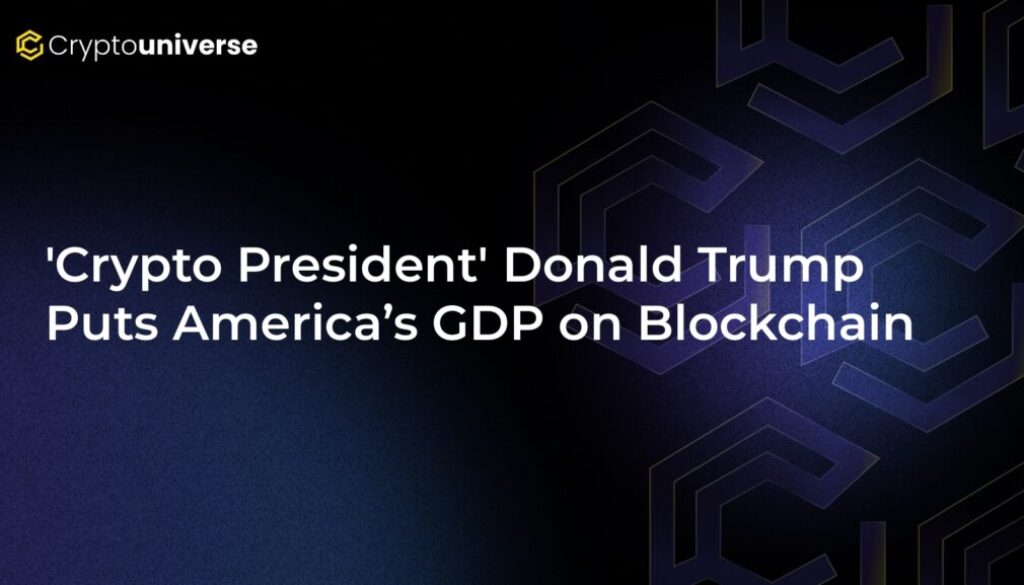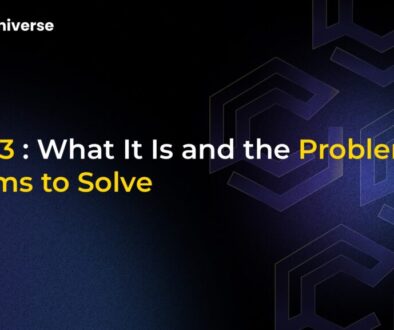‘Crypto President’ Donald Trump Puts America’s GDP on Blockchain

A Watershed Moment: The United States Just Put Its Economic Engine On-Chain
In a move that has sent shockwaves through both Washington D.C. and the global digital asset community, President Donald Trump has officially directed the Bureau of Economic Analysis (BEA) to publish the United States’ Gross Domestic Product (GDP) data directly onto a public blockchain. The announcement, made from the White House today, August 30, 2025, marks the single most significant government adoption of blockchain technology in history and cements Trump’s legacy as the first true ‘Crypto President’.
This decision effectively carves one of the world’s most critical economic indicators into an immutable digital ledger, making it permanently accessible, transparent, and verifiable by anyone on the planet. The era of questioning official figures and debating data revisions may be coming to a dramatic end.
Why Put ?
For years, government-reported economic data has been a target for skeptics and political opponents who often accuse administrations of manipulating figures for political gain. The Trump administration is positioning this move as the ultimate antidote to that distrust.
In a press conference, a senior administration official outlined the core objectives:
- Radical Transparency: By placing GDP data on a blockchain, the administration aims to create a single source of truth that cannot be retroactively altered or censored. Every revision and update will be a new transaction on the chain, creating a clear, auditable history.
- Restoring Trust: The move is a direct appeal to a populace weary of perceived institutional opacity. The official slogan for the initiative is “Make America’s Data Honest.” It’s a powerful message that leverages the core ethos of cryptocurrency—trust through code.
- Technological Supremacy: This is also a geopolitical power play. By becoming the first major world power to adopt blockchain for such a critical function, the U.S. signals its intent to lead the next wave of technological innovation, often dubbed Web3.
How Will It Actually Work? A Glimpse Under the Hood
While full technical details are still emerging, sources suggest the BEA will utilize a purpose-built, permissioned blockchain. This means that while the data is publicly readable, only authorized nodes within the BEA can write the initial data to the ledger.
Key Features of the System:
- Smart Contract Audits: The data will reportedly be published via a smart contract that automatically time-stamps and records the quarterly GDP figures. This contract will be open-source, allowing independent developers to audit the code for vulnerabilities.
- Immutable Record-Keeping: Once a GDP figure is on the chain, it’s there forever. Any subsequent adjustments or revisions, which are a normal part of the economic reporting cycle, will be recorded as new entries that clearly link back to the original, preserving a perfect historical record.
- API Accessibility: The system is expected to provide a public API, allowing economists, financial institutions, and even automated trading algorithms to pull data directly from the blockchain, ensuring everyone is working from the same untamperable numbers.
The Market Reacts: Crypto Soars, Wall Street Scratches Its Head
The reaction was immediate and explosive. The crypto markets, which have seen steady gains under Trump’s crypto-friendly administration, surged on the news. Bitcoin and Ethereum saw double-digit percentage gains within hours, as the announcement was seen as the ultimate validation of blockchain’s real-world utility.
Conversely, traditional financial analysts have expressed a mixture of awe and trepidation. While many applaud the goal of transparency, they raise critical questions:
- Garbage In, Garbage Out: Blockchain ensures the data isn’t tampered with after it’s published, but what about the data collection process itself? Critics argue that the potential for manipulation simply moves upstream.
- National Security Concerns: Is it wise to place such sensitive national data infrastructure on a public-facing network, regardless of its security? The potential for state-sponsored attacks is a major concern.
- Overkill or Innovation?: Is this a genuinely useful innovation, or a costly and complex piece of political theater? The debate is already raging in financial circles.
The First Domino in a Government On-Chain Revolution?
President Trump’s decision to put
This single action opens the door to a future once relegated to science fiction. Could we one day see federal budgets, election results, or property deeds all secured on a blockchain? With today’s historic announcement, that future suddenly seems much closer than we ever imagined.


